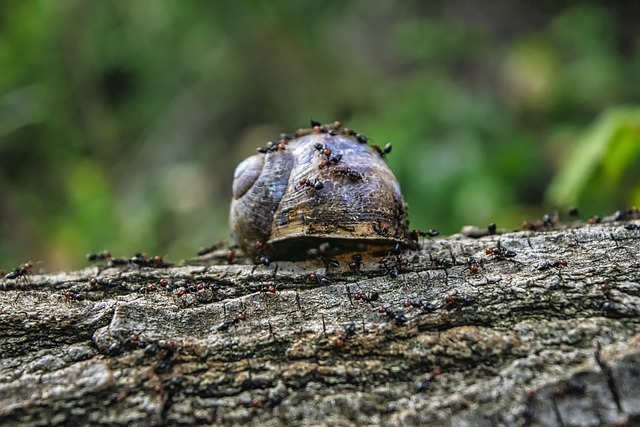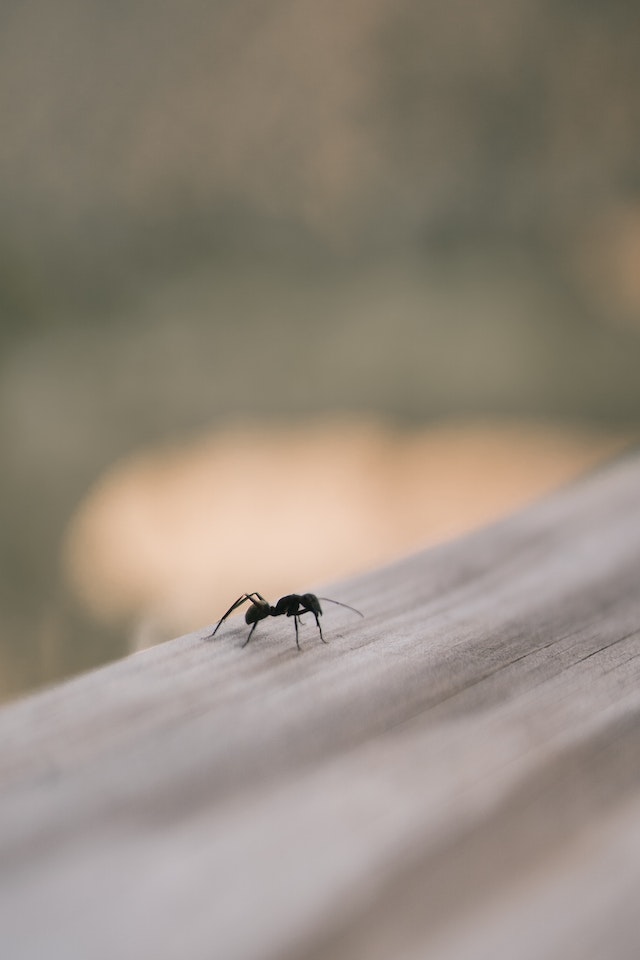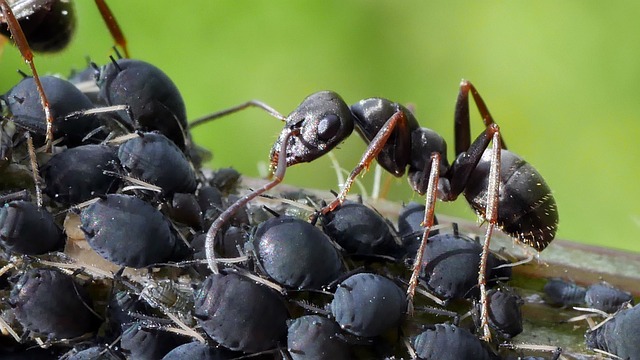
Ants. They are not just visitors; they are, at times, unwelcome residents. These tiny yet persistent insects have a knack for finding their way into our homes and gardens, leaving homeowners to wonder: what are ants attracted to?
In this blog, we’ll uncover the secrets of what draws ants to both indoor and outdoor spaces in North Carolina. From the sweet scents of blooming wildflowers to the crumbs left behind after a family picnic, ants find a multitude of reasons to explore our living spaces.
What Are Ants Attracted to Indoors?
Ants are intriguing little creatures driven by an unyielding quest for nourishment. When infiltrating indoor spaces, they are particularly attracted to any food source available. Understanding what entices these tiny invaders can help prevent infestations and maintain a pristine living environment. So what are ants attracted to indoors?

1. Food Residues: Ants can sniff out even the tiniest remnants of food. Crumbs, spills, and leftover food particles on countertops or floors act like beacons to them. Common indoor food sources that tempt ants include sugary goodies (like syrup, honey, and sugar), greasy remnants (cooking oil and butter), and carbohydrate-rich fare (bread, cereals, and pasta). Swiftly tidying up after meals and securely storing food in airtight containers can go a long way in discouraging them.
2. Sweet Delights: Certain ants, such as pavement ants and odorous house ants, have a sweet tooth. They’re particularly drawn to sugary delights like candy, soda, fruit juice, and jams. Keeping your sweet treats contained and mopping up spills will help keep them at bay.
3. Protein Sources: Other ant species, like Argentine ants, have a hankering for protein-rich foods. Meat, dairy products, and even pet food can be tempting targets. Storing pet food securely and swiftly cleaning up after meals can thwart any ant infestation plans.
4. Moisture: Ants can’t do without water, so any sources of moisture in your home are a magnet for them. Leaky faucets, damp spots in the bathroom or kitchen, and even overwatered potted plants create a welcoming environment for ants. Fixing leaks and controlling humidity levels can deter them.
5. Scents and Odors: Strong food, garbage, and even certain cleaning product odors can be irresistible to ants. Be cautious when using heavily fragrant cleaning agents, and remember to regularly take out the trash to reduce the allure of food scents.
6. Cracks and Openings: Ants can infiltrate your home through even the tiniest openings. They have a knack for spotting these entry points, which can lead them to indoor food sources. Sealing cracks and gaps in windows, doors, and your home’s foundation is a proactive way to keep them out.
7. Warm, Dark Areas: Ants prefer to stay hidden from view. Dark, secluded places like the back of cabinets, behind appliances, or under sinks can provide ants with a safe hiding spot close to their food source.
What Are Ants Attracted to Outdoors?
In Raleigh’s outdoor spaces, ants are naturally inclined to check out certain attractions. Understanding what piques their interest can help you maintain a pest-free outdoor environment. What are ants attracted to in Raleigh’s great outdoors? Here’s what ants tend to be drawn to when they’re outside:

1. Nature’s Sweets: Ants have a sweet tooth and naturally gravitate toward sources of sugar in the great outdoors. This includes fallen fruit, nectar from blooming flowers, and any sugary residues left behind from outdoor gatherings.
2. Aphids and Honeydew: Ants have a symbiotic relationship with aphids. Aphids feed on plant sap and produce honeydew, a sugary substance ants enjoy. The flourishing plant life in your region can support aphid populations, which, in turn, attract ants looking to collect honeydew.
3. Outdoor Gatherings: The alluring aroma of food and beverages at outdoor events is a definite draw for ants. They are often spotted exploring picnic areas or barbecue setups. Cover food and clean up afterward to deter them during your outdoor gatherings.
4. Garden Bounty: If you have a garden, ants may find their way to your homegrown fruits and vegetables. Produce like strawberries, tomatoes, and watermelons can be particularly tempting. Consistently tending to your garden and harvesting produce can help reduce ant presence.
5. Hydration Stations: Like all living creatures, ants need water to survive. Birdbaths, puddles, or clogged gutters can become essential watering holes for them. Proper water source management and drainage can make your yard less appealing to ants.
6. Hide and Seek: Ants often seek refuge in fallen leaves and yard debris, which provide shelter and potential food sources. Maintaining a well-kept outdoor space, raking up dead leaves, and tidying things can discourage ant activity.
7. Cozy Nests: Woodpiles and mulch beds can be ideal nesting sites for ants seeking a secure and concealed environment. Ensuring woodpiles are kept at a distance from your house and periodically refreshing mulch can make your yard less inviting to ant colonies.
Ant Attractions: The Bottom Line
For homeowners in North Carolina dealing with ant infestations, it’s essential to recognize that there are various strategies to curb ant activity in and around your home.
These include removing ant attractants, practicing good hygiene indoors, and maintaining outdoor spaces. In many cases, it can be challenging to eradicate ants without professional pest control services.
Pest control experts possess the knowledge and resources to accurately identify and address ant infestations. While homeowners can take preventive measures and manage smaller ant issues, pest control often becomes the most effective and reliable solution for persistent or severe infestations.
At Innovative Pest Solutions, we provide plans that will help you eliminate pesky ants that invade your property. We even offer year-round fire ant control with our 1-2-3 Premium Plus Termite Damage Protection plan!
Reach out today to learn how we can help you with ant infestations. Contact us now!





